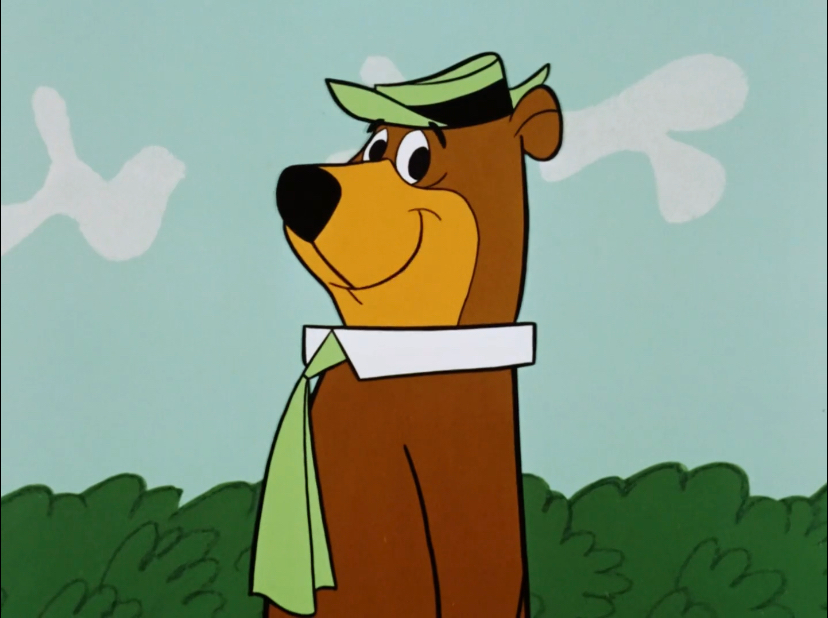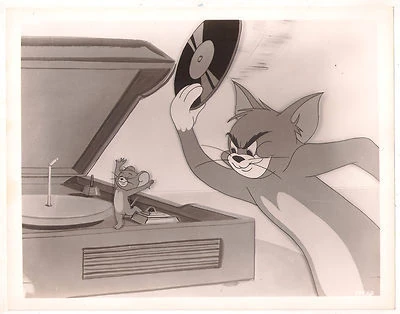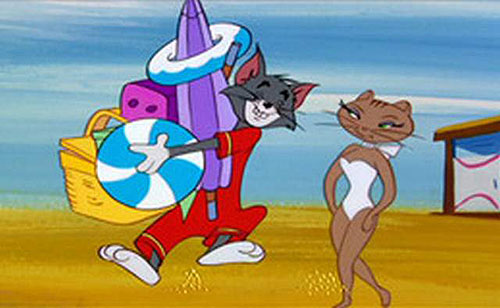
In some ways, this short film can be considered a follow up to the earlier Tom and Jerry cartoon, Pup on a Picnic (1955). The two films have a similar premise about Spike and Tyke trying to have an outdoor meal and Tom and Jerry interrupting it. The cartoons also both featuring pretty much the same ending gag.
This short film begins with Spike wanting to treat Tyke to an outdoor barbecue. However, Tom and Jerry's fighting ends up ruining their barbecue.
Like many Tom and Jerry films of this period, this cartoon is more charming than actually funny. There is only one gag that made me audibly laugh here (the giant steak shrinking to a very tiny one). However, this despite a lack of real laughs, this cartoon is a lot of fun. Spike and Tyke are wonderful here and there is a real sweetness and charm to their interactions with each other. This is a rare cartoon where Tom and Jerry are really supporting characters in their own cartoon, however due to some strong character animation (even if the animation itself was getting more limited by this time). I especially love how when Jerry is hiding in the pepper and later the bread, these objects move in a way that seems to have Jerry's personality. This cartoon also benefits from some very strong background art. When viewed in the right aspect ratio, the background art is simply lovely to look at. I especially love the trees that look like a beautiful minimalist painting. The suburban atmosphere to much of the background art also gives this film the feel of Hanna-Barbera's early TV output and the same charm can be found here.
The credited animators on this film were Irven Spence, Lewis Marshall, Kenneth Muse and Ed Barge. The credited background artist is Robert Gentle, and the credited layout artist is Dick Bickenbach. Gentle worked on such Hanna-Barbera shows as The Huckleberry Hound Show, The Yogi Bear Show, Quick Draw McGraw, Top Cat, The Flintstones, Wacky Races, Scooby-Doo Where Are You, Super Friends and many more. Richard Bickenbach not only worked on William Hanna and Joseph Barbera's Tom and Jerry shorts but also on their later TV work. He would work on such Hanna-Barbera TV series as Quick Draw McGraw, The Huckleberry Hound Show, Top Cat, The Flintstones, The Jetsons, Scooby-Doo Where Are You and many more. He would also work on the Hanna-Barbera feature films, The Man Called Flintstone (1966) and Charolette's Web (1973) as well as the Loopy the Loop theatrical shorts. This is the 104th Tom and Jerry cartoon.
This cartoon is available on the DVD sets Tom and Jerry: Classic Collection Volume 4, Tom and Jerry Spotlight Collection, Vol. 3 and Tom and Jerry: Pint-Sized Pals as well as the Laserdisc set The Art of Tom & Jerry: Volume II and the new Blu-ray set, Tom and Jerry: The Complete CinemaScope Collection.
This marks the first MGM cartoon with the sound recorded in Perspecta Stereo. Every subsequent MGM cartoon was recording using this method.
Like many of the Tom and Jerry cartoons that were released in the widescreen CinemaScope format, this film has often been cropped when shown on TV. There was an especially bad example of this that aired on TV in the 1990's, which only showed 1/3 of the picture making much of what was happening indecipherable. Luckily with the new Blu-ray set that came out this year, we can watch this film looking beautiful.











